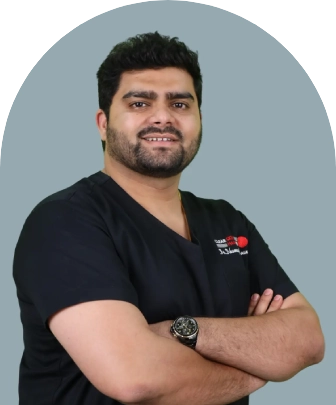Clearing Acne Scars: Causes, Treatments, and Secrets
Reviewed By: ![]() Dr. Dhananjay Chavan
Dr. Dhananjay Chavan
Updated on: 13th June, 2024

Table Of Content
- What causes Acne Scars?
- 4 Treatments for Acne Scars
- Conclusion
What causes Acne Scars?
Acne scars happen when acne breakouts penetrate the skin deeply and damage the tissues beneath it. After a breakout, the skin tries to repair itself by making new collagen fibers, but these repairs usually aren’t as smooth and flawless as the original skin. If the skin produces too much collagen, you get raised scars. If it doesn’t produce enough, you end up with pits or depressions. Factors like picking or popping pimples, severe acne (like cysts and nodules), and even genetics play a role in whether someone will get acne scars.
Acne के दाग नहीं जा रहे? | Secrets to Clearing Acne Scars | Effective Solutions | ClearSkin Pune
4 Treatments for Acne Scars
The journey to diminish Acne scars begins with recognizing the diversity of available treatments. Each method comes with its unique mechanism of action, tailored to different types of scars and skin conditions. From surface-level interventions like chemical peels to more in-depth procedures such as surgical treatments, the options are vast.
Chemical Peels:
Chemical peels involve the application of a chemical solution that causes the top layer of the skin to peel off, revealing newer, less scarred skin beneath. The depth of the peel can vary.
Superficial peels use mild acids like alpha-hydroxy acid to gently exfoliate the outermost layer of skin.
Medium peels use trichloroacetic acid to reach the middle and outer layers of skin, targeting deeper scars and wrinkles.
Deep peels use phenol to penetrate deeply into the skin, addressing more severe scars and skin conditions.
When to Opt for This Option: Chemical peels are best for those with superficial scarring, or discoloration, or those looking for overall skin rejuvenation. The choice of depth depends on the severity of the scars and the desired downtime, with deeper peels offering more dramatic results but requiring a longer recovery period.
PRP Therapy:
Platelet-rich plasma (PRP) therapy uses the patient’s own blood components to promote skin healing and regeneration. The process involves drawing blood, processing it to concentrate the platelets, and re-injecting this platelet-rich plasma into the scarred areas.
Mechanism: PRP releases growth factors that stimulate tissue regeneration and increase collagen production, essential for healing scars.
Combination Treatments: Often used in conjunction with microneedling to enhance outcomes, as the micro-injuries from microneedling allow for deeper penetration of the PRP.
When to Opt for This Option: PRP is particularly effective for individuals with deep scars and those looking for a natural approach to scar treatment. It’s also ideal for enhancing the results of other treatments, providing an overall boost to the skin’s healing process.
Microneedling Radiofrequency:
This advanced treatment combines the collagen-stimulating effects of microneedling with the skin-tightening benefits of Microneedling radiofrequency energy. Small needles create controlled micro-injuries to the skin, and radiofrequency energy is delivered deep into the dermis.
Benefits: The treatment stimulates collagen and elastin production, leading to significant improvements in skin texture, firmness, and scar appearance.
Suitability: Particularly effective for treating all types of acne scars, including atrophic, boxcar, and rolling scars, and can be adjusted for different skin types and depths of scarring.
When to Opt for This Option: This is an excellent choice for those with moderate to severe acne scars seeking noticeable improvement without the downtime or risks associated with more invasive surgical options. It’s also suitable for individuals with a broad range of skin types, including those at risk for hyperpigmentation.
Acne scars: Types,Cause & Treatments (English)
Surgical Treatment:
Surgical options for acne scars include methods like subcision, excision, and laser surgery, each tailored to specific types of scars.
Subcision is useful for rolling scars, where fibrotic strands pull the skin downward, creating an indentation. The procedure releases these strands, allowing the scar to elevate.
Excision (or Punch Excision) directly removes the scarred tissue, followed by suturing the skin, ideal for deep and narrow scars.
Laser Surgery can vary from ablative lasers that remove layers of skin to non-ablative lasers that stimulate collagen production without damaging the surface.
When to Opt for This Option: Surgical treatments are best suited for individuals with deep or severe scars that have not responded to other treatments. These options should be considered after a thorough evaluation and discussion with a dermatologist or plastic surgeon, who can recommend the best surgical approach based on the individual’s specific scar types and skin condition.
Do You Know?
Roughly 250 Patients Are Treated
Everyday By These Dermatologists
(You are one click away from flawless skin)
Meet Our Dermatologist!
Conclusion
The secret to clearing acne scars lies in a personalized approach. So it’s important to understand the specific types of scars and select the most appropriate treatment or combination of treatments. For this, consulting with a dermatologist or skincare specialist is crucial. Only they can create a tailored plan suited to your skin’s needs and your aesthetic goals.
We hope this guide has offered you much-needed information on acne scars. If you still have some questions, our experts are here to help. So reach out and talk to our experts.
Further Reading
Is Tretinoin Cream Safe for Melasma? Tips and Usage Guide
Discover how tretinoin cream can safely treat melasma.
Unveiling the Potential of Face Packs for Acne Scars
Discover how homemade and customized face packs can help lighten acne marks and rejuvenate your skin.
Home Remedies for Acne Scars
Effective Home Remedies for Acne Scars
Salicylic Acid: Your Ultimate Guide to Banishing Acne Scars
Salicylic acid helps fade acne scars by exfoliating the skin and promoting cell renewal. Discover its benefits, effectiveness, and how to use it safely.
Have thoughts? Please let us know
We are committed not only to treating you, but also educating you.






